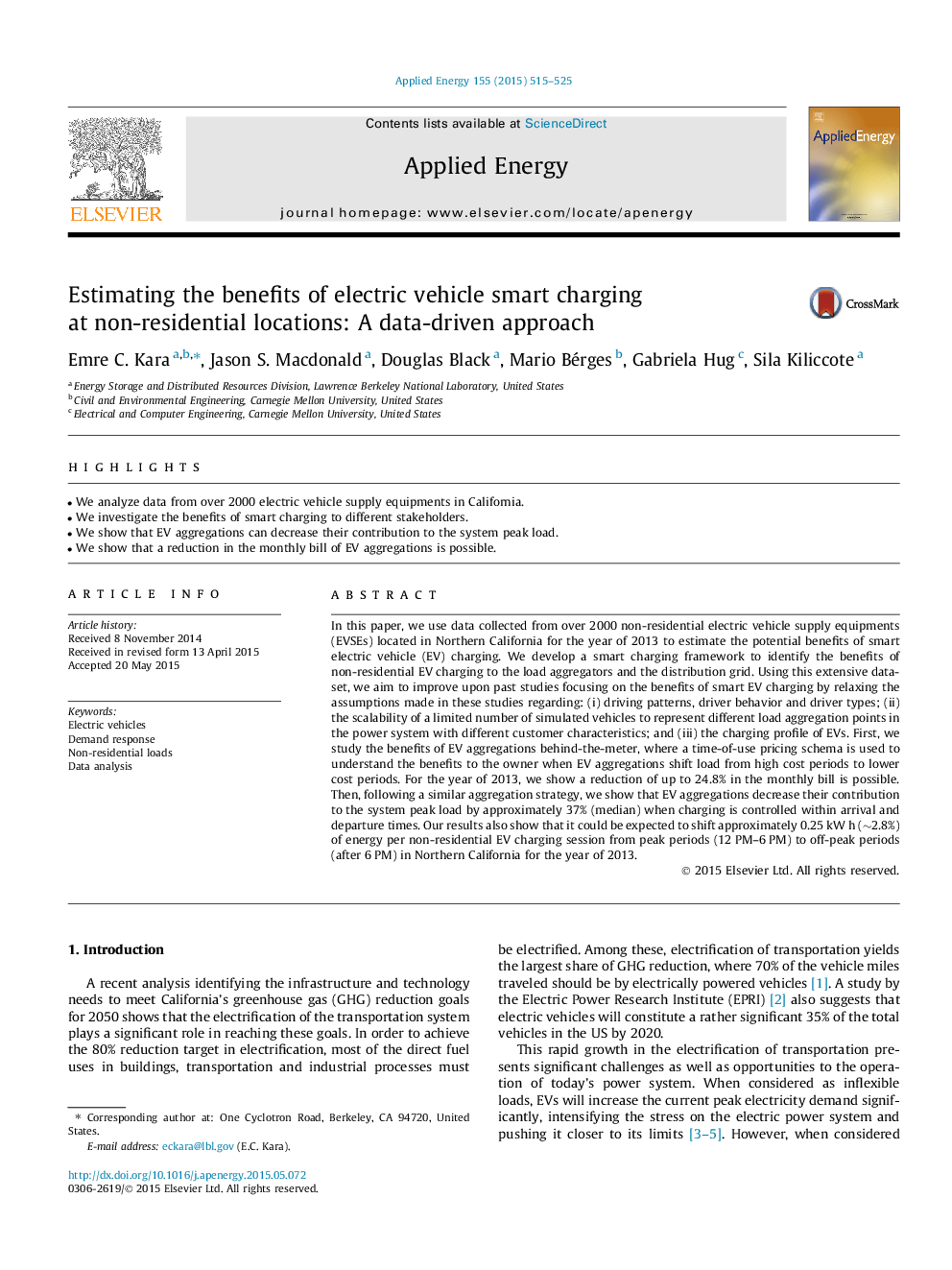| Article ID | Journal | Published Year | Pages | File Type |
|---|---|---|---|---|
| 6686564 | Applied Energy | 2015 | 11 Pages |
Abstract
In this paper, we use data collected from over 2000 non-residential electric vehicle supply equipments (EVSEs) located in Northern California for the year of 2013 to estimate the potential benefits of smart electric vehicle (EV) charging. We develop a smart charging framework to identify the benefits of non-residential EV charging to the load aggregators and the distribution grid. Using this extensive dataset, we aim to improve upon past studies focusing on the benefits of smart EV charging by relaxing the assumptions made in these studies regarding: (i) driving patterns, driver behavior and driver types; (ii) the scalability of a limited number of simulated vehicles to represent different load aggregation points in the power system with different customer characteristics; and (iii) the charging profile of EVs. First, we study the benefits of EV aggregations behind-the-meter, where a time-of-use pricing schema is used to understand the benefits to the owner when EV aggregations shift load from high cost periods to lower cost periods. For the year of 2013, we show a reduction of up to 24.8% in the monthly bill is possible. Then, following a similar aggregation strategy, we show that EV aggregations decrease their contribution to the system peak load by approximately 37% (median) when charging is controlled within arrival and departure times. Our results also show that it could be expected to shift approximately 0.25Â kWÂ h (â¼2.8%) of energy per non-residential EV charging session from peak periods (12Â PM-6Â PM) to off-peak periods (after 6Â PM) in Northern California for the year of 2013.
Related Topics
Physical Sciences and Engineering
Energy
Energy Engineering and Power Technology
Authors
Emre C. Kara, Jason S. Macdonald, Douglas Black, Mario Bérges, Gabriela Hug, Sila Kiliccote,
